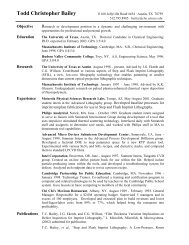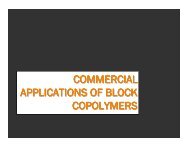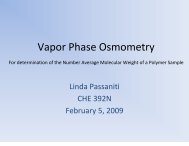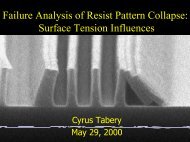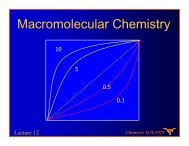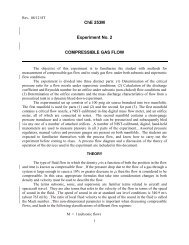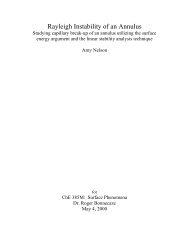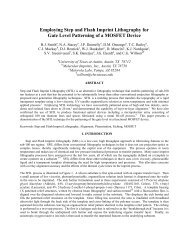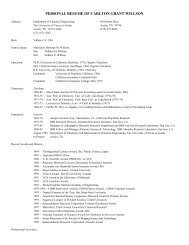Asymmetric fluid-structure dynamics in nanoscale imprint lithography
Asymmetric fluid-structure dynamics in nanoscale imprint lithography
Asymmetric fluid-structure dynamics in nanoscale imprint lithography
- No tags were found...
You also want an ePaper? Increase the reach of your titles
YUMPU automatically turns print PDFs into web optimized ePapers that Google loves.
The boundary conditions are p = 0 whenLx = ± . From the boundary2conditions, C1= 0 and26µ L dh= − . Substitut<strong>in</strong>g for C 1 and C 2 gives4hdtC23p parallel3 dh 2 2( x) ( x − L )= µ . [2.23]2hdt34The pressure distribution is parabolic and symmetric about ( x = 0). For parallelplates the normal damp<strong>in</strong>g force per unit width is simplyfL2µ L= ∫ p(x)dx = −hparallel 3−L23dhdt[2.24]From equation 2.24, it is observed that the <strong>fluid</strong> layer generates large1damp<strong>in</strong>g forces that scale as and is directly proportional to both the approach3hvelocity of the template and the viscosity of the <strong>fluid</strong>.2.3.3 Squeeze Film Due to an Incl<strong>in</strong>ed Surface of Inf<strong>in</strong>ite WidthIn the case of a flat, <strong>in</strong>cl<strong>in</strong>ed plate approach<strong>in</strong>g a surface, the height of theplate relative to the surface it approaches varies l<strong>in</strong>early along the x direction.The template geometry and flow profile are shown <strong>in</strong> Figure 2.5. The gap height∂h2= and = hD+ xθD sec θ .∂tis h( t, x) hx = h() t + x tanθ() t29



